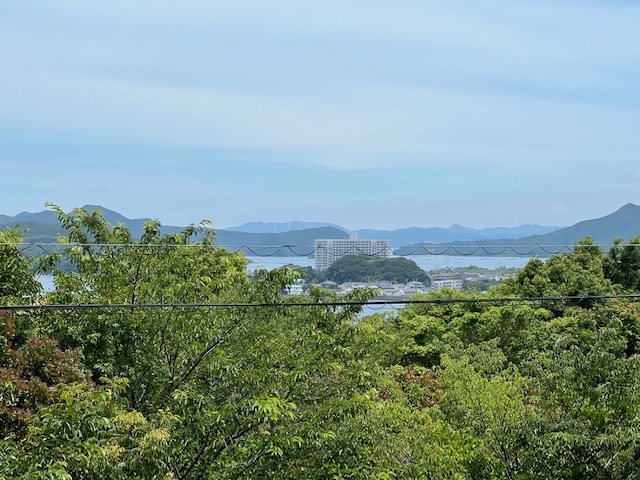Chapter 207
The rainy season began in Shikoku this weekend. It is four days later than usual (according to the Japan Meteorological Agency), but the sudden downpour is different from the image of a rainy season that continues to drizzle. When I was a child, I was taught that the thunder that rumbles before and after the rainy season is a sign of the rainy season, but I haven't heard much thunder recently. I was also taught that the path of thunder is fixed, but it seems to be taking a different path recently. Tokushima is an area that is strongly associated with typhoons, but in recent years, typhoons have not passed through it very often. This is probably due to rising temperatures and changes in air currents. In particular, it is believed that the influence of greenhouse gases due to the rapid economic development of mainland China is strong. The Chinese government has indicated its reduction policy in the China Climate Change Action Plan (NDRC 2007) announced in 2007. At that time, the world's factories were at their peak, and factories producing all kinds of home appliances such as TVs and smartphones were built in large numbers, causing serious environmental pollution. With the 2008 Beijing Olympics approaching, the move was intended to address concerns about whether the Olympics could be held safely in smoggy Beijing. Since then, China has made progress in utilizing natural energy sources such as solar and wind power, and in the sophistication of industry. In particular, the shift to electric vehicles has progressed at an astonishing speed, and China is now a world leader in electric vehicles. On the other hand, the ban on Chinese semiconductors, which began due to national security issues, has led to a growing trend of avoiding Chinese products, not just semiconductors, and the momentum of Chinese manufacturing has weakened. From an environmental perspective, the slowdown of the Chinese economy is the best environmental measure, and although the per capita gas emissions of wealthy Chinese people are increasing to the same level as developed countries, it is good news that the momentum is weakening overall. The May 25th issue of the Nihon Keizai Shimbun reported under the headline "Tokushima prepares for disaster recovery, sense of crisis over Nankai Trough, discussion of relocation to higher ground" that Kaiyo-chou, a port town facing the Pacific Ocean at the southernmost tip of Tokushima Prefecture, ranked first in the nation in terms of progress in advance preparations. In fiscal 2021, the town formulated a pre-reconstruction plan assuming the Nankai Trough, and calculated the required area for temporary storage of disaster waste and the required number of temporary housing units. In addition, the town has consolidated related departments to improve its internal system, and will conduct training for employees to check reconstruction procedures. It also plans to hold workshops to discuss with townspeople how to relocate settlements to higher ground after a disaster. It is ironic that Kaiyo Town, which is experiencing depopulation, is ranked first in the nation, not in the center of Tokushima City. According to the Kaiyo Town Depopulated Area Sustainable Development Plan (2021-2025), the town has a vast topography with a total area of 327.67 km2 (about 8% of the prefecture's area), about 90% of which is mountainous. In the past, forestry was thriving, and the town prospered by transporting timber cut from the mountains to Kobe. According to the "Hyogo Kitaseki Irifune Notification Book" (1445), a historical document handed down from Todaiji Temple, there is a record that the number of ships registered in the Kaifu region that entered Hyogo was the "number one in Shikoku" and 10th overall. According to the census, the population of this town has been declining every year since peaking at 20,591 in 1950, and in 2015 the population was 9,283, halving in 65 years, and the town is leading the nation in declining population. Looking at the composition by age group, the elderly population (65 years and older) has exceeded the minority population (0-14 years old) since 1985, and the proportion of the elderly population in the total population rose to 43.2% in 2015, and it is expected that the aging population will continue to progress in the future. I have deliberately listed statistical data and facts without mixing in my personal opinions, but the reality is more interesting than what I have to say
June 10, 2024
Is the thunder also the result of depopulation?



